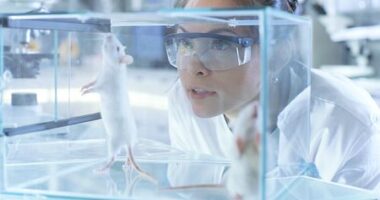New Type of Genetic Alteration in BBS1 Gene Linked to Bardet-Biedl Syndrome, Study Finds

A new type of mutation affecting the BBS1 gene was identified in a patient diagnosed with Bardet-Biedl syndrome (BBS), a case report states.
The study, “Retrotransposon insertion as a novel mutational event in Bardet-Biedl syndrome,” was published in the journal Molecular Genetics & Genomic Medicine.
BBS is a complex disease characterized mainly by progressive vision loss, abnormal weight gain, the presence of extra fingers or toes (polydactyly), autism-like behavior, cognitive impairment, and abnormalities of the genitalia, among other secondary features.
Genetic mutations affecting approximately 21 genes have been previously identified as the cause of BBS, with the BBS1 gene being the most frequently mutated.
In the present case study, researchers described the case of a female patient, born to nonconsanguineous parents of European origin, with clinical manifestations consistent with a diagnosis of BBS.
The patient had night blindness, constriction of visual field, and photophobia (sensitivity to light) at age 9. She had reduced visual acuity in both eyes, and severe degeneration of the eye’s light-sensitive cells.
She also presented obesity (a body mass index of 37.6 at age 13), fatty infiltration of the liver, elevated lipid (fat) levels, an extra digit, developmental delay, autism, and absence-type seizures.
An initial genetic analysis using standard methods revealed she had the Met390Arg mutation in the BBS1 gene, the most common mutation linked to the disease. She had inherited the mutation from her mother; her father was not a carrier of any known disease-linked BBS1 mutations.
Further analysis through whole genome sequencing (WGS; a technique to determine the complete DNA sequence), and analysis of single-nucleotide variants and genetic insertions/deletions revealed an alteration on the father’s BBS1 gene. It corresponded to the insertion of a small virus-like DNA sequence, known as retrotransposon. This change in BBS1 sequence led to the production of a longer BBS1 protein.
“DNA transposable elements (TE) are mobile DNA elements that occupy nearly half of the human genome, yet are poorly explored,” researchers said. Now, the team reported for the first time a “retrotransposon insertion in a BBS1 [sequence] as a disease-causing mechanism for Bardet-Biedl syndrome.”
Active TE accounts for approximately 0.02% of the human genome. However, technical difficulties associated with their detection make it harder to identify them as disease-causing mutational events.
The team believes that TE analysis “can significantly increase diagnostic yield and improve patient care,” and highlights “the importance of systematically performing transposon detection analysis on WGS data of unsolved cases” to allow the discovery of more disease-causing mutations.




